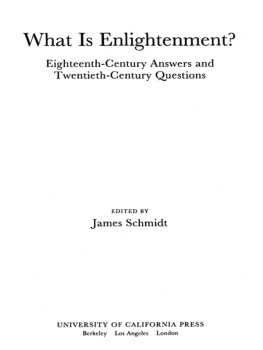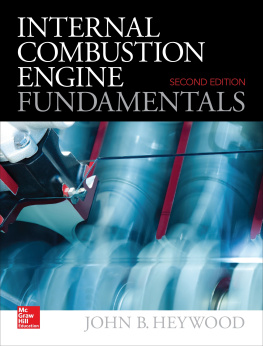The Deutsche Nationalbibliothek lists this publication in the Deutsche Nationalbibliografie; detailed bibliographic data are available on the Internet at http://dnb.dnb.de.
Alkyl Perchlorate Esters
It is not because alkyl perchlorate esters are very important that they ended up in this prominent location in the first chapter of the Encyclopedia of Oxidizers; it happened because the chapters are now arranged in alphabetical order, and the letter A, of course, comes first in the alphabet.
Many organic energetic materials do not fit into the oxidizer category because they are underoxidized. Other energetic materials are not suitable as monopropellants because they are solids. These organic solid materials may be discussed in later volumes on solid propellant additives. Solid propellant additives can be energetic materials or they can be nitrogen-rich additives that are often added as coolants to solid gas generants.
Alkyl perchlorates and alkyl difluoroamino compounds have some similarities, and both types of compounds have been considered as rocket propellants, but their notorious shock sensitivity prevented any further development.
Alcohols will form esters with many acids. If acids carry oxygen, i.e., if they are oxyacids, the resulting esters may be of interest as rocket propellants. Esters of carboxylic acids are not suitable as rocket propellant oxidizers. Some are used as plasticizers in solid propellants. The oxyacids of interest are primarily those with nitrogen or chlorine as the central atom. Alkyl nitrites and alkyl nitrates will be discussed in later chapters. Alkyl perchlorates are the subject of this chapter. While in the realm of solid propellants (more accurately, composite solid propellants) solid inorganic perchlorates occupy a dominant position, liquid organic perchlorates have not gained much (if any) importance in the realm of liquid propellants. Those who had once worked with alkyl perchlorates in the laboratory later said that they would not want to touch them again with a ten-foot pole.
Alkyl perchlorates are mostly of theoretical interest. The theoretical advantage of alkyl perchlorates RClO4 over alkyl nitrates RNO3 is that they carry four oxygen atoms in a molecule instead of only three and the central atom, chlorine, is also an oxidizer and will combine with hydrogen to form HCl, as opposed to nitrogen in nitrates, which is only carried along as an inert ballast. For alkyl chlorates RClO3 the advantage is not so clear. Alkyl chlorates are less stable than alkyl perchlorates, and little is known about alkyl chlorates.
For compounds with the general formula CcHhClclOo, the oxygen balance is defined as
=-32c+14h-14cl-12o/MW100%
where c, h, cl, and o represent the number of atoms of each element and MW is the molar mass of the substance. For methyl perchlorate, is +14%, indicating that the substance has more oxygen in its formula than is needed for complete combustion to CO2, H2O, and HCl. It will rightfully be listed here as an oxidizer.
Preparation of Alkyl Perchlorates
Alkyl perchlorates (perchlorate esters, perchloric acid esters) have been prepared by the reaction of alkyl halides with anhydrous silver perchlorate [], but they are not suitable as rocket propellants. Using a silver salt such as silver perchlorate as one of the reactants automatically makes this a very expensive proposition.
A very useful review of the synthesis and properties of covalent organic perchlorates was compiled and translated in 1988 [].
In one of the first publications on the synthesis of methyl, ethyl, and propyl perchlorates, the pure substances were described as oily liquids and were said to be extremely explosive []. Surprisingly, the investigators reported a boiling point of 325K (52C) for methyl perchlorate and 362K (89C) for ethyl perchlorate, suggesting that these compounds were at least thermally stable up to that temperature. Methyl perchlorate can be purified by distillation, boiling point 323K at 89kPa (50C at 670mmHg).
Alkyl perchlorates are miscible with ether or ethanol, but they are susceptible to hydrolysis in the presence of water and must be kept dry. Methyl perchlorate hydrolyzed faster than ethyl perchlorate and ethyl perchlorate in turn hydrolyzed faster than propyl perchlorate.
Concern about the hazards of alkyl perchlorate esters was echoed in a study that noted that many physical properties of these compounds are unknown because of their fragility [].
Primary alkyl iodides reacted with silver perchlorate in pentane, carbon tetrachloride, or 1,1,2trichlorotrifluoroethane to give primary and secondary perchlorates, with secondary isomers predominating []. In benzene, only unrearranged products were obtained. An excess of alkyl iodide and, to a lesser extent, methylene chloride also inhibited isomerization. Isopropyl iodide and allyl iodide, as well as primary iodides, were converted to the corresponding perchlorates and triflates in high yield. Inhibition of rearrangement was rationalized on the basis of the reduced reactivity of complexed silver ions.
Alkyl perchlorates can form by deamination of alkylamines in the presence of perchlorate anion sources [].
An easy preparation of secondary alkyl perchlorates that does not require the use of expensive silver perchlorate or alkyl iodides involves the addition of a secondary alcohol or unbranched olefin to a well-stirred emulsion of perchloric acid, sulfuric acid, and an inert hydrocarbon or fluorocarbon []. The acid reagent can be prepared by combining 70% perchloric acid, 96% sulfuric acid, and oleum, or by dissolving lithium perchlorate in 96% sulfuric acid. The formation of isomeric secondary alkyl perchlorates was, in most cases, very rapid and virtually quantitative. The ester products were extracted into the organic layer, from which they may be isolated if desired. The composition of the isomeric mixture is dependent on the reaction conditions and can be made to highly favor one specific desired isomer.
The preparation of tetraperchlorate of methane was attempted []. Displacement of halogen from carbon tetrahalides was accomplished starting with either CCl4 or CBr4 using the halogen perchlorates ClOClO3 and BrOClO3. Although the displacement process was successful, the generated carbon perchlorate intermediates could not be isolated. Instead, these species decomposed quickly to COCl2, CO2, and Cl2O7. The perchlorate reactions were often uncontrolled, sometimes explosive, giving CO2 and Cl2O7. The vigorous displacement reactions that often occurred required moderation by dilution with inert fluorocarbon solvents, but the end result was the same as before. Thus, only COCl2, CO2, and Cl2O7 were found. Tetranitromethane was also examined as a precursor for tetraperchlorate of methane or mixed nitroperchlorate methanes. However, it was unreactive with Cl2O4 in the presence or absence of a solvent.
Dichlorine heptoxide is a versatile perchlorylating reagent. Reaction of Cl2O7 with alcohols provides a general method of synthesizing alkyl perchlorates, including electronegatively substituted samples, such as 2fluoro-2,2-dinitroethyl perchlorate and 2,2dinitropropyl perchlorate, which cannot be prepared by standard methods []. Dichlorine heptoxide in carbon tetrachloride is a general reagent for converting alcohols to alkyl perchlorates. Simple primary alcohols, as well as ethylene glycol, 1,4butanediol, 2,2,2trifluoroethanol, 2,2dinitropropanol, 2fluoro-2,2-dinitroethanol, 2-(2-fluoro-2,2-dinitroethoxy)ethanol, allyl alcohol, and propargyl alcohol, gave the corresponding unrearranged perchlorates. 2Propanol gave isopropyl perchlorate. 2Hexanol and 3hexanol gave mainly unrearranged perchlorates. Ketones gave


















